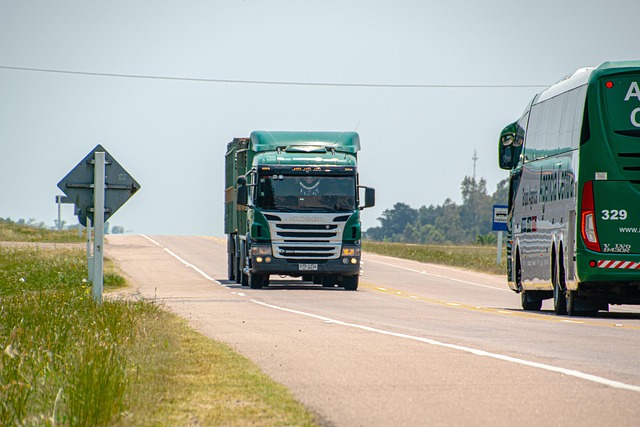Looking to register your car in California? This guide breaks down the process step-by-step, ensuring a smooth experience. From understanding key requirements and gathering essential documents to completing the online or in-person registration, we’ve got you covered. A crucial first step is verifying your vehicle’s VIN (Vehicle Identification Number) using reliable tools. By following these instructions, you’ll be on your way to securing your California car registration in no time, with minimal hassle.
- Understand California Car Registration Requirements
- Gather Necessary Documents for Car Registration
- Verify Vehicle's VIN (Vehicle Identification Number)
- Complete Online or In-Person Registration Process
- Pay Registration Fees and Receive License Plate
Understand California Car Registration Requirements

Before registering your car in California, it’s crucial to understand the state’s specific requirements. One key aspect is ensuring your vehicle has a valid and accurate Vehicle Identification Number (VIN) inspection. California law mandates that all vehicles must undergo a VIN verification process during registration. This involves cross-referencing the VIN with official records to confirm its authenticity and history, helping to deter theft and fraud.
A mobile VIN verification service can be particularly useful in this process. These services, often provided by specialized companies, offer convenient on-site or mobile VIN inspections. Using advanced technology, they check against national databases to ensure the VIN is legitimate, providing peace of mind as you prepare your car for California roads. This step, combined with gathering necessary documents and fees, will streamline the registration process.
Gather Necessary Documents for Car Registration

Before you begin the registration process, ensure you have all the required documents. The California Department of Motor Vehicles (DMV) requires several key pieces of information and items to verify your vehicle’s ownership and condition. One crucial tool for this verification is a VIN verifier, which can be used to quickly check the Vehicle Identification Number (VIN) against national databases to confirm its authenticity.
A mobile VIN verifier or vin inspection service is especially useful, as it allows you to complete these initial checks remotely and conveniently. This includes proof of purchase, vehicle registration documents from a previous state if applicable, and identification papers like your driver’s license. Gather these materials to streamline the registration process at the DMV.
Verify Vehicle's VIN (Vehicle Identification Number)

Before you begin the registration process, it’s crucial to verify your vehicle’s Vehicle Identification Number (VIN). This unique 17-character code is a critical component in ensuring your car’s authenticity and history. A reliable VIN verifier, such as a mobile vin verification service, allows you to check for any discrepancies or hidden issues that might affect the registration process.
Using a mobile vin inspector can streamline this step significantly. With just a few clicks on your smartphone, you can gain access to detailed vehicle information, including its past owners, maintenance records, and any reported accidents. This proactive measure not only saves time but also helps prevent potential problems during the California car registration procedure.
Complete Online or In-Person Registration Process

Registering a car in California can be done either online or in-person, offering convenience to residents. For those opting for an online process, the California Department of Motor Vehicles (DMV) provides a streamlined procedure. You’ll need to gather essential documents, including proof of ownership and identification, and input your Vehicle Identification Number (VIN). A reliable VIN verifier, such as a mobile VIN inspection service, can assist in this step by ensuring the vehicle’s history is accurate and free from any discrepancies.
In-person registration involves visiting a local DMV office with all necessary paperwork. This method might be preferable for those seeking personalized assistance or needing to address any issues with their application immediately. Either way, the process aims to verify your identity, ensure the vehicle’s eligibility, and complete the registration, resulting in a valid California vehicle registration and license plate.
Pay Registration Fees and Receive License Plate

After ensuring your vehicle meets all necessary requirements, such as passing an emissions test with a mobile vin inspection or vin verification, it’s time to pay the registration fees. California offers both online and in-person payment options for registering your car. When paying online, you’ll typically need to provide details like your vehicle identification number (VIN), personal information, and current registration data. Once the payment is processed, the state will issue a registration certificate, along with any necessary license plates.
For traditional license plate issuance, you may be required to visit a local California Department of Motor Vehicles (DMV) office. There, an agent will verify your vehicle’s details using the VIN verifier and ensure all paperwork is in order. After confirming these details, they’ll process your registration request, generate license plates, and provide you with the necessary documentation to complete the car registration process.
Registering a car in California involves understanding the state’s requirements, gathering essential documents, verifying your vehicle’s VIN (using a reliable VIN verifier), completing a straightforward registration process either online or in-person, and paying associated fees. Once registered, you’ll receive license plates that officially mark your vehicle as legally operating within the state. This process ensures road safety and security for all California drivers.
